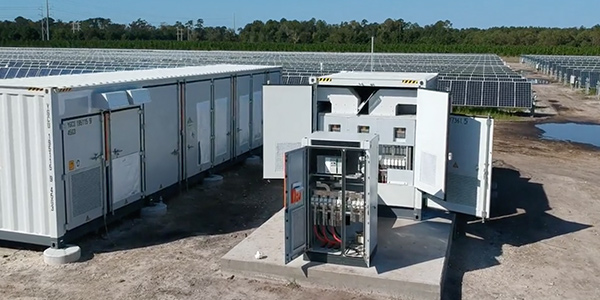The CAISO Board of Governors unanimously adopted the first of two proposals Wednesday intended to allow co-located and hybrid resources, such as solar panels coupled with battery storage, to connect to the grid more seamlessly.
The proposals, part of the ISO’s hybrid resources initiative, were fast-tracked to speed the addition of storage at existing interconnection points. CAISO needs the new capacity to help head off a projected shortfall next summer caused by the retirement of aging natural gas plants and the inability of solar to meet evening peak demand without storage. (See CAISO Briefs Western EIM on Hybrid Resources.)
In response to the anticipated shortfall, the California Public Utilities Commission required load-serving entities under its jurisdiction to procure 3,300 MW of capacity by 2023. Some LSEs proposed integrating co-located resources into the market as soon as this fall, and CAISO moved quickly to adopt its co-located connection plan by the end of July to allow FERC 90 days to approve Tariff changes before the resources go live.
“There is an urgency around getting [policy to support] these co-located resources … because we start to see these resources coming on and interconnecting late this year,” Mark Rothleder, CAISO’s vice president for market policy and performance, told the board. “We need to get started with some minimum features around the point of interconnection … [and] we will continue to work on additional features that have been requested in future phases.”
The starting point includes new Tariff language governing resources that share a single point of interconnection but have separate resource IDs, allowing CAISO to dispatch them individually.
CAISO executives decided to implement the co-located plan first because it involves more familiar procedures. The hybrid resources plan — allowing solar and storage to be dispatched as a single unit — could prove trickier, they said.
“The co-located model allows for the underlying resources to be modeled in a manner similar to existing resources today but requires the ISO market to manage a constraint at the point of interconnection to ensure that the combination of resources does not receive market instructions beyond the interconnection limit,” Rothleder wrote in his memo to the board.
The board will take up the hybrid resources plan this fall. CAISO needs additional time to develop a proposal that will let it deal with situations in which intermittent resources such as wind and solar are offline because of weather conditions, while the storage component keeps operating, Rothleder said.
“Enabling hybrid resources requires several new features for the resource operator to communicate to the ISO when portions of the generating facility are unavailable because of deviations in the variable output component of the hybrid resource,” he wrote.
The co-located resources plan is slated to take effect this fall. The hybrid resources component is scheduled to be brought before the board in November and implemented one year later.
Some stakeholders have expressed concern that CAISO is moving too fast to bring new storage online, but others have said the speed is warranted by the impending shortfall and the number of projects lined up.
CAISO’s interconnection queue contains about 24 GW of mixed-generation projects, including 20 GW of storage projects. Much of the storage is proposed for sites where solar arrays and wind farms already operate.
“Developers are adding storage to existing sites because adding resources at these locations can be done more quickly and at a lower cost than establishing new interconnections,” Rothleder said. “Lower costs are achieved due to the existing infrastructure, such as step-up transformer equipment that is already a part of the existing facility.”
In addition, he said, “siting at existing facilities takes less time to go through the ISO’s interconnection process because the capacity addition can be considered through the material-modification process, rather than the process of siting a new facility, which includes additional analysis and approvals.”
The integration of hybrid resources is expected to be a major issue for CAISO and other organized markets, as battery storage paired with renewables plays an ever greater role.
FERC held a technical conference Thursday to discuss the issue. (See FERC, RTOs Need to Set Hybrid Rules, Experts Say and FERC Sets Tech Conference on Hybrid Resources.)



